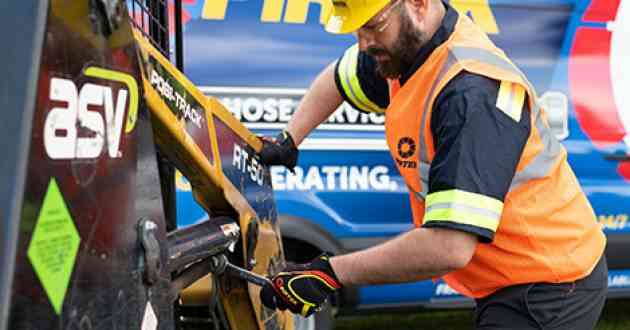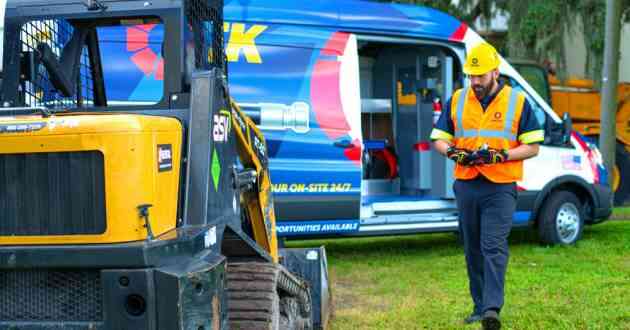A Comprehensive Guide To Hydraulic Hose Safety
- - Category: Industrial
- - 26 Oct, 2023
- - Views: 14
- Save
Safe handling and storage practices are crucial to extend the lifespan of hydraulic hoses and maintain their integrity.
Hydraulic hoses play a vital role in various industries, powering machinery and equipment that rely on hydraulic systems. While hydraulic hoses are designed to withstand high pressures and deliver fluids efficiently, they can pose safety risks if not properly maintained and used. Understanding hydraulic hose safety is crucial to prevent accidents, injuries, and equipment damage. In this comprehensive guide, we will explore key safety practices and precautions to follow when working with hydraulic hoses.
- Regular Inspection and Maintenance
Regular inspection and maintenance are essential for ensuring the safety and reliability of hydraulic hoses. Perform visual inspections to check for signs of wear, damage, leaks, or loose fittings. Look for signs of abrasion, bulging, cracking, or corrosion on the hose surface. Replace any damaged or worn-out hoses immediately to prevent potential failures. Additionally, schedule routine maintenance to clean hoses, check fittings, and replace worn seals or O-rings.
- Proper Hose Selection
Selecting the right hydraulic hose for your specific application is crucial for safety. Consider factors such as the type of fluid, operating pressure, temperature range, and compatibility with fittings and equipment. Consult hose manufacturer guidelines and industry standards to ensure you choose the appropriate hose with the necessary specifications. Using the wrong type of hose can lead to hose failure, leaks, and potential accidents.
- Correct Hose Installation
Proper hose installation is vital to prevent hose failures and ensure optimal performance. Follow these guidelines for correct installation:
Avoid sharp bends or kinks that can restrict fluid flow or cause hose damage.
Use appropriate fittings and connectors that match the hose specifications.
Ensure proper alignment and secure connections without overtightening.
Use protective covers or sleeves to prevent abrasion or damage from external factors.
Route hoses away from hot surfaces, moving parts, or potential pinch points.
Use clamps or brackets to secure hoses and prevent excessive movement or vibration.
- Safe Handling and Storage
Safe handling and storage practices are crucial to extend the lifespan of hydraulic hoses and maintain their integrity. Follow these guidelines:
Handle hoses with care, avoiding excessive bending, dragging, or twisting.
Use proper lifting techniques and equipment when moving heavy hoses.
Store hoses in a clean, dry, and well-ventilated area away from direct sunlight, extreme temperatures, chemicals, or sharp objects.
Avoid stacking or piling hoses, as it can cause deformation or damage.
Use hose racks or reels to store hoses neatly and prevent tangling or tripping hazards.
- Pressure Relief and Lockout/Tagout Procedures
Before performing any maintenance or repair tasks on hydraulic systems, it is crucial to release pressure and follow lockout/tagout procedures. This prevents unexpected energization of the system and eliminates the risk of accidental hose bursts or hydraulic fluid discharge. Relieve pressure slowly and cautiously using proper techniques and tools. Use lockout/tagout devices to secure the system and prevent unauthorized operation during maintenance.
- Personal Protective Equipment (PPE)
When working with hydraulic hoses, it is important to wear appropriate personal protective equipment (PPE) to minimize the risk of injuries. Depending on the specific task and environment, PPE may include:
Safety goggles or face shields to protect the eyes from flying debris or hydraulic fluid splashes.
Gloves to provide hand protection from cuts, abrasions, or chemical exposure.
Protective clothing to shield against potential fluid contact or injuries from hose failures.
Steel-toed boots or safety shoes to protect the feet from heavy objects or hydraulic equipment.
- Training and Education
Proper training and education are essential for anyone working with hydraulic hoses. Ensure that personnel are adequately trained in hydraulic system operation, maintenance, and safety protocols. Training should cover topics such as hose inspection, installation, pressure relief procedures, and emergency response. Stay updated with industry standards and best practices to ensure a safe working environment.
- Emergency Response Preparedness
Even with proper precautions, accidents can still occur. It is crucial to have an emergency response plan in place. Train employees on emergency procedures and provide them with the necessary equipment to handle potential hose failures, leaks, or spills. Ensure that first aid kits, spill containment materials, and emergency shut-off valves are readily accessible. Regularly review and practice emergency response drills to ensure preparedness.
By following these safety practices and precautions, you can minimize the risk of accidents, injuries, and equipment damage associated with hydraulic hoses. Remember that safety should always be a top priority when working with hydraulic systems. Regular maintenance, proper installation, and adherence to industry standards will help ensure the safe and efficient operation of hydraulic equipment.
FAQs
How often should hydraulic hoses be inspected?
It is recommended to inspect hydraulic hoses regularly, ideally on a weekly or monthly basis. However, the frequency may vary depending on the specific application and operating conditions.
Can hydraulic hoses be repaired instead of replaced?
In some cases, minor repairs can be done on hydraulic hoses. However, it is generally recommended to replace damaged or worn-out hoses to ensure safety and reliability.
What are some common causes of hydraulic hose failures?
Common causes of hydraulic hose failures include abrasion, excessive pressure, improper installation, chemical degradation, age, and incompatible fluids.
Can I reuse fittings from an old hose on a new one?
Reusing fittings from old hoses is generally not recommended. Fittings can wear and deform over time, compromising their integrity. It is best to use new fittings when installing a new hose.
Is training necessary for working with hydraulic hoses?
Yes, proper training is essential for anyone working with hydraulic hoses. Training ensures that personnel understand safety protocols, proper handling techniques, and emergency response procedures.



